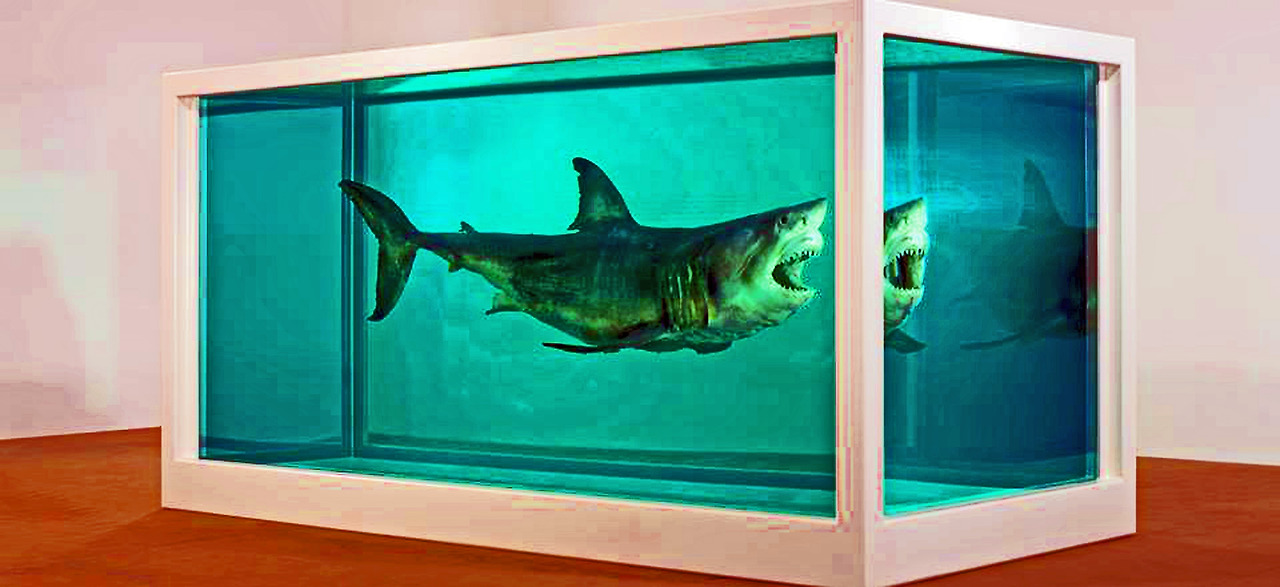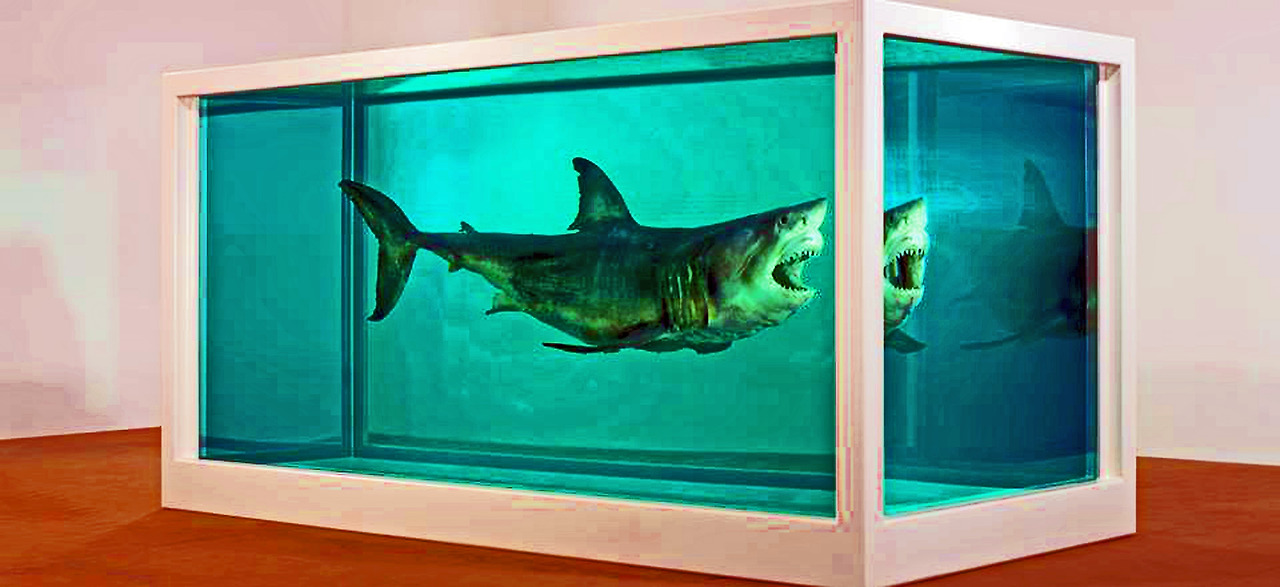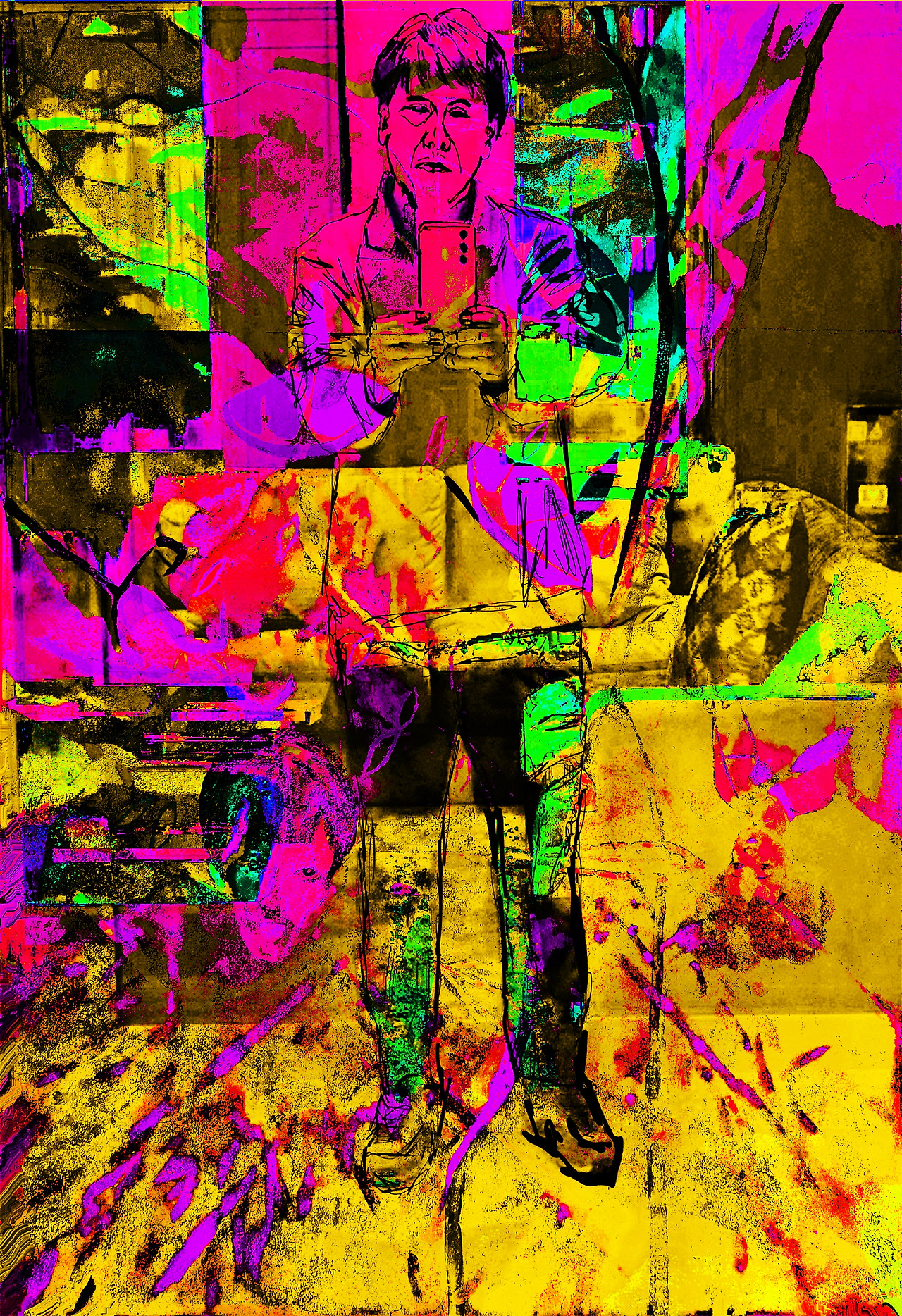미술평론가 최철주 [32] 미술평론, 현대미술평론, 개념추상현실주의평론: 데미안 허스트의 작품 '상어' Damien Hirst's work The Shark <The Physical Impossibility of Death in the Mind of Someone Living> 미술평론: 현대미술평론가 최철주 욕망 개념 추상 팝 아트는 타자의 욕망 예술의 추상 개념적 접근 방식과 팝 아트의 추상 디자인 형태 및 실재 이미지를 결합한다. 이것은 그의 욕망
미술평론가 최철주 [32] 미술평론, 현대미술평론, 개념추상현실주의평론: 데미안 허스트의 작품 '상어' Damien Hirst's work The Shark <The Physical Impossibility of Death in the Mind of Someone Living> 미술평론: 현대미술평론가 최철주 욕망 개념 추상 팝 아트는 타자의 욕망 예술의 추상 개념적 접근 방식과 팝 아트의 추상 디자인 형태 및 실재 이미지를 결합한다. 이것은 그의 욕망 개념, 즉 현대 미술이 등장하는데, 형이상학적 철학적 빛에서 강조된 언어적 의미의 개념과 충돌하는 그림이 인공 조명으로 극적인 사건 이미지를 연출한다./ 현대미술가 및 현대개념추상화가의 개념추상 미술작품평론 디자인 프로세스 : 현대개념추상예술로서 시각예술이론을 통해 미적가치의 예술성을 검토하고 현대개념추상화가이자 비평가인 최철주는 그의 「morning glory」 작품을 통해 종종 추상적인 욕망 개념과 언어적 의미 구조를 반영하여 지각과 미적 구조를 해석하고, 그 결과로 추상적 욕망의 언어적 의미와 동일한 실재 이미지의 추상화로 귀결된다. Modern Art Criticism: Choi Chul-joo Desire Concept Abstract pop art combines the abstract conceptual approach of the other's desire art with the abstract design form and real image of pop art. This is his concept of desire, that is, contemporary art, in which a painting that conflicts with the concept of linguistic meaning emphasized in metaphysical philosophical light produces a dramatic event image with artificial lighting. [30] Contemporary art critic Louis Choi Chul-joo is a contemporary art critic who examines the aesthetic values, processes, and artistry of photography, cartoons, art, and design, and approaches the meaning of a work with the theory of visual art. Picture-speaking language structure is a gaze reality image in which the image of abstract desire seems to be the semantic structure of the concept of desire. Art critic Choi Chul-joo approaches the aesthetic value, process, and artistry of contemporary art criticism with the concept of desire abstract design along with contemporary art criticism. His criticism refers to the theory of visual art in which the artistry of photography, cartoons, art, and design approaches the meaning of a work in the language structure and criticizes the reality of the concept of desire./ Contemporary Art Review with Visual Art of the Story of Contemporary Art Critic Louis Choi Chul-joo & A modern art review that examines the aesthetic value, process, and artistry of photography, cartoons, art, and design, and approaches the meaning of the work with the theory of visual art/ Design Process of Contemporary Artist and Contemporary Concept Abstract Painter Concept Abstract Art Work Critique: As Contemporary Concept Abstract Art, the artistry of aesthetic value was examined through visual art theory, and Choi Chul-joo, a Contemporary Concept Abstract Painter and Critic, was his Through "morning glory" works, perceptions and aesthetic structures are often interpreted by reflecting abstract conceptions of desire and linguistic semantic structure, resulting in abstraction of the same real image as the linguistic meaning of Conceptual Abstract Desire Artwork: 데미안 허스트의 작품 '상어' Damien Hirst's work The Shark <The Physical Impossibility of Death in the Mind of Someone Living> 미술평론:

Photo Source: Facebook
루이 최철주의 예술 비평: 데미안 허스트의 작품 '상어'는 회화 작품이 아니라 개념적 표상입니다.
이것은 단순한 충격적 설치미술이 아닌, 언어 이전의 실재 이미지로서 살아있는 사람의 마음속 죽음의 물리적 불가능성과 결핍된 욕망 구조를 시각화한 개념추상 리얼리즘의 원형적 이미지이다. 그것은 회화적 이미지가 아닌 생물학적 죽음의 불가능성을 시각화하지만 부적절한 보존으로서 죽음의 생물학적 실체를 드러내는 결과를 낳았다.
미국이 창작한 낭만적인 미학적 행위를 거부하는 상업적 팝 아트를 따라가는 데미안 허스트의 작품 '상어'는 예술 작품이 아니라 개념적인 표현입니다.
개념적 표현으로서 상어는 실재의 결핍을 드러내는 오브제 포름알데히드에 떠 있는 상어를 죽음의 실체를 은폐한 채, 타자의 욕망을 응시하는 기호적 구조로 작동합니다. 이는 관람자에게 죽음의 실재를 인식하지 못하게 만드는 언어적 결핍의 장치이다.
그의 스케치가 개념 미술로 포장되어 영국 팝 아트로 대중화될 때가 지났습니다.
언어적 의미의 해체된 스케치로 만들어진 유리탱크 속 상어는 실재의 흔적으로서 예술적 가치는 언어적 의미의 이미지로서의 설치미술로 전이했다.
개념은 현실과 만나는 예술 행위입니다. 현실이 그림이 아닌 박제 인형이 된다면 이는 과도한 문학적 사상입니다.
빛의 그림자가 뒤집히고 언어적 의미가 시간성에 의해 해체되는 유리 수조 속 상어는 빛과 그늘의 교차점에서 현실과 상상력이 충돌하고 비언어적 현실은 이미지와 의미의 분리를 통해 예술적 흔적을 남깁니다. 실제로 상어를 비롯한 연극 배우 같은 동물들이 과장된 문학적 스타일로 등장합니다.
실제 미적 행동을 거부한 팝아트는 사회적 규범에서 벗어난 다양한 소비주의를 강조했지만, 미디어와 소통했습니다.
영국의 현대 미술을 대표하는 데미안의 작품의 개념적 가치는 셰익스피어의 희곡으로 착각하여 멈춘 미학적 행위로 대체될 수 없습니다.
욕망의 지도 이미지로서의 상어는 단순한 죽음의 상징이 아니라, 언어화되지 않은 욕망의 흔적으로서 결핍된 실재를 추적하는 철학적 장치입니다. 이것은 욕망 구조로서 실재의 상어 이미지와 언어적 의미의 전단계로서의 무의식적으로 죽음을 시각화한 것이다. 따라서 설치 미술의 개념적 가치를 또 다른 동물을 등장시켜서 “상어”의 미학적 가치를 대리하긴 어럽다.
현대 미술은 과거의 금지된 규제 속에서 간신히 숨을 쉬기 시작하면서 사진을 통한 무의미한 미적 활동을 잠시 멈췄지만, 사진 이미지와 다르지 않은 그의 상어는 포름알데히드를 현상액으로 사용한 이미지일 뿐입니다.
따라서 상어의 존재는 타자의 욕망을 응시하는 실재의 결핍된 흔적을 보이지만 추상적 리얼리즘의 단상이다.
개념 예술가들은 개념 예술에서 상상력에 중점을 두지만, 그들의 개념은 현대 미술의 개념을 대표하지 않습니다.
개념적 구조로서 유리탱크는 언어적 의미를 차단하는 상징계의 장치이다. 이것은 언어적 의미의 전단계 이미지로서 다양한 현대 미술에서 하나의 설치 이미지다.
따라서 현대 미술의 개념을 알 수 없다고 해서 단순한 개념을 예술적 가치로 장식할 수는 없습니다.
그가 실재 구조를 멈추게 한 포름알데히드는 실재를 보존하려는 욕망의 질료적 흔적이지만 미적 구조로서의 역할은 존재하지 않는다.
테이트와 사치 갤러리가 만든 그의 브랜드는 그의 작품에 상업화된 작품처럼 기여하여 미적 행동을 귀금속의 가치로 변화시켰습니다.
허스트의 스케치를 입체파 피카소 수준으로 끌어올린 테이트 미술관의 전 해석 책임자가 비슷한 스케치가 개념적으로 다르다고 말할 수 있을까요!
이것은 단지 관람자의 위치를 상어를 응시하면서도 실재에 닿지 못하는 분열된 주체의 단상일 뿐 추상적 리얼리즘의 실체를 보여준 피카소 그림과는 다르다.
허스트의 상어는 자본으로 구성된 욕망 구조를 개념 예술의 극단적인 실험으로 사용하여 예술적 소비 구조를 형성했지만, 예술의 경계와 윤리를 되묻는 장치로 전환할 수 있다.
그럼에도 그의 ‘상어’는 현대인의 존재론적 불안과 욕망의 구조를 시각화한 철학적 회화로 해석할 때에 개념추상 리얼리즘의 원형적 실재 이미지로 자리매김하여서 단순한 충격이나 상업적 설치가 아니라, 사유하는 존재로서의 언어적 실재와 욕망 사이의 어긋난 만남을 드러낸다.
비록 예술 행위가 비현실적이라는 것이 밝혀졌지만, 현실을 만나려는 낭만주의 화가는 비현실적으로 그려진 캔버스를 반복적으로 만나 현대 미술이 되었습니다. / 글. 미술평론가 최철주 (문화디자인박사)

Photo Source: Facebook
Louis Choi Chul-joo's Art criticism: Damien Hirst's work The Shark 《The Physical Impossibility of Death in the Mind of Someone Living》 is not a painting work of art, but a conceptual representation.
This is not just a shocking installation art, but a real image before language, a prototype image of conceptual abstract realism that visualizes the physical impossibility of death in the mind of a living person and the structure of a lack of desire. It visualizes the impossibility of biological death, not a pictorial image, but has resulted in revealing the biological reality of death as an inappropriate preservation.
Damien Hirst's work Shark, which follows commercial pop art that rejects romantic aesthetic acts created by the United States, is not an artwork but a conceptual representation.
As a conceptual expression, the shark acts as a symbolic structure in which the shark floating on the object formaldehyde reveals the lack of reality, concealing the reality of death, and staring at the desire of the other. This is a device of linguistic deficiency that prevents the viewer from recognizing the reality of death.
The time has passed for his sketches to be wrapped in conceptual art and popularized as British pop art.
The shark in the glass tank made of dismantled sketches in the linguistic sense has shifted its artistic value as a trace of reality to installation art as an image in the linguistic sense.
Concept is an act of art that meets reality. If reality becomes stuffed animal, not a painting, it is an excessive literary idea.
Sharks in glass tanks, where light shadows are flipped over and linguistic meanings are dismantled by temporality, collide between reality and imagination at the intersection of light and shade, and nonverbal reality leaves artistic traces through the separation of image and meaning. In fact, it features sharks and other animals like theater actors in an exaggerated literary style.
Pop art, which rejected real aesthetic behavior, emphasized various consumerism that deviated from social norms, but communicated with the media.
The conceptual value of Damien's work, which represents contemporary art in England, cannot be replaced by an aesthetic act that has stopped by mistaking it for Shakespeare's play.
The shark as a map image of desire is not just a symbol of death, but a philosophical device that traces the reality of deficiency as an unverified trace of desire. This is a structure of desire and a linguistic meaning, a pre-stage of the image of a real shark that unconsciously visualizes death. Therefore, it is difficult to express the aesthetic value of 'Shark' by introducing other animals with the conceptual value of installation art.
Modern art stopped meaningless aesthetic activities through photography momentarily as it barely began to breathe in the prohibited regulations of the past time, but his shark, which is not different from the photographic image, is just an image using formaldehyde as a developer.
Therefore, the existence of a shark shows a lack of reality staring at the desires of the other, but it is a phase of abstract realism.
Conceptual artists focus on imagination in conceptual art, but their concepts do not represent the concepts of contemporary art.
As a conceptual structure, the glass tank is a device of the symbolic world that blocks out linguistic meaning. It is an image as a precursor to which linguistic meaning is not revealed. It is an installation image of one of various contemporary art.
Therefore, just because the concept of contemporary art cannot be known, a simple concept cannot be decorated with artistic value.
Formaldehyde, where he stopped the actual structure, is a material trace of his desire to preserve reality, but it does not act as an aesthetic structure.
His brand, created by Tate and Saatchi Gallery, contributed to his work like a commercialized work, transforming aesthetic behavior into the value of precious metals.
And can the former head of interpretation of the Tate Museum, who raised Hirst's sketches to the level of Cubist Picasso, say similar sketches are different in concept!
This is different from Picasso's painting, which shows the reality of abstract realism, but it shows only a divided image of a subject who cannot reach reality by looking at the shark's position.
Hirst's shark formed an artistic consumption structure by using a desire structure composed of capital as an extreme experiment of conceptual art, but it can be transferred to a device that asks back the boundaries and ethics of art.
Nevertheless, when interpreted as a philosophical painting that visualizes the structure of the ontological anxiety and desire of modern people, his "shark" is established as a circular reality image of conceptual abstract realism that reveals not only simple shocks or commercial installations but also the encounter of linguistic reality and desire as a thinking being.
Although the art act turned out to be non-realistic, the romantic painter who tried to meet the real repeatedly encountered the canvas painted as non-realistic and became contemporary art./ Writing. Art critic Choi Chul-joo (Doctor of Cultural Design)
